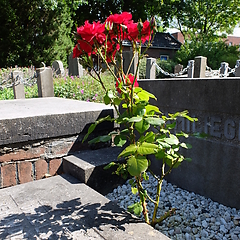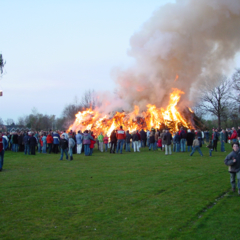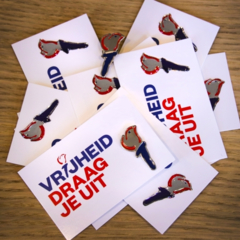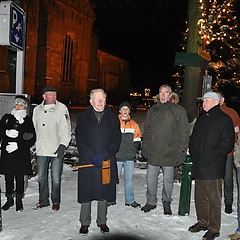The Poaskearls (dialect for: Easter Guys) are Catholic, single men of around twenty years old. On the first Sunday of Lent they start with the preparations for Easter. They approach two suitable candidates to become Poaskearl. At Easter there are always eight Poaskearls, to be recognised by their long beige raincoats, black trousers and hats. One can be Poaskearl for a maximum of four years. During that period one may not get married, but dating is allowed. For the purpose of making an Easter bonfire, the Poaskearls request already at the beginning of Lent cooperation for wood, straw and petroleum at fixed addresses. They also organise the Easter meadow, where the woodpile can be built and the big Easter bonfire can be lit on Easter Sunday. On good Friday the two new Poaskearls are presented. On Easter Saturday, at noon, the town crier announces the Easter celebration. Wood is fetched and the bonfire built (dialect: boaken). On Easter Sunday, around 5 PM, the Poaskearls come to walk around the boaken, hand in hand. This is the start of the so-called vlöggeln. Led by the Poaskearls a long serpentine of people, hand in hand and singing, moves through the streets of the little town. The first, eldest Poaskearl traditionally smokes a cigar at this moment. At the end of the tour the children are lifted up high, three times, while everyone shouts ‘Hurray!’. The lifting symbolises the resurrection of Jesus Christ. At 8:30 PM the Easter bonfire is lit by the Poaskearls. On Easter Monday the ritual of the tour and the vlöggeln is repeated.



